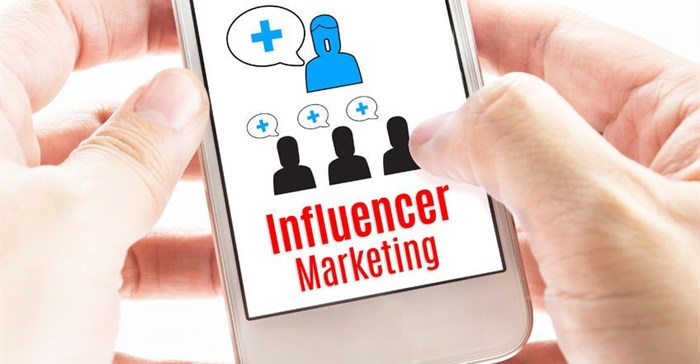Influencer marketing for dummies: 2018 and beyond

There's no question about it; in 2018, we are the best position to execute effective influencer marketing strategies, given that companies the world over have developed tools that can help us identify and reach influencers and work with them to build out compelling marketing campaigns.
Driving this trend are two questions brands and marketers in South Africa have begun to ask themselves. What is digital influencer marketing and how can we work with digital influencers?
The key numbers:
- 90% of consumers trust peer recommendations
- Consumers are 75% more likely to make a purchase based on social media references
- 80% of general internet users trust advice and recommendations and blogs
- Conversion can increase 3-10x when sharing content through influencers.
What is influencer marketing?
Influencer marketing is a type of marketing that focuses on key individuals in a niche rather than a large market and aims at enlisting their help in reaching specific target markets or expanding reach and influence of any company’s marketing efforts.
Now you might be concerned that you are late to the party and other brands have already tied up with all possible influencers and there’s no one left to partner with, that is far from the truth.
Influencer marketing is not just about finding a celebrity and offering them money.
You can still identify and connect with what we call micro-influencers and build out equally successful influencer marketing plans.
How to identify micro-influencers to work with?
It's important to remember that your selection of influencers needs to take into account the social platform that is important for your business. If most of your audience makes decisions based on what they see on Twitter, you need to find an influencer who has clout on Twitter.
There are two primary ways to find influencers. You could search through countless social media profiles looking for that perfect influencer for your brand or you could partner with an agency whose focus is finding and working with Influencers. While some brands might try to take this task in-house and find influencers themselves, I'd highly recommend working with a dedicated agency to handle all the influencer discovery and negotiations.
Once you have identified the right influencers, you then need to catch their attention, build a relationship with them, set the right goals, decide on how you will measure your efforts and then set a campaign rolling.
Influencer marketing goals and KPI's
You need to have a definite why to run a successful influencer marketing campaign, or you won’t see results in any specific direction. You can’t run a campaign without clear goals, just because, or because everyone else is doing it.
- Do you want to reach certain new markets?
- Do you want to speak to a specific niche?
- Do you want an existing or planned campaign amplified?
- Do you want to establish more trust with your audience?
- Do you want expert content created?
Once you have your end goal, you can formulate a strategy to reach and work with influencers.
How to work with influencers
When you first connect with influencers, you need to realise that they have no real reason or motive to work with you. You have to give them a reason. That is why building relationships with them before you need to work with them becomes important.
- Follow influencers and understand what matters to them
I’ve personally noticed that when you genuinely follow anybody, make real conversations with them and share content/ideas that interest them, they naturally reciprocate.
- Understand that their time is valuable
Don’t approach an influencer unless you have a solid plan down to the last detail in hand. If your approach is premature, the influencer may not understand what you expect of them and your conversations may lead nowhere.
- Arrive at a mutually beneficial agreement
You need to identify and offer something that is very likely to motivate an influencer to participate in your program. Many influencers need to be paid for their services, but they also care about quality and the spirit of the brand that you want them to represent.
- Be honest and transparent
It is best to be upfront about intentions and expectations if you wish to work with an influencer over an extended period of time. It is also a good idea to be honest with your audience and use disclaimers where needed.
How to measure your influencer marketing campaign
There are several metrics that you can use to measure the effect of your campaign. You should ideally choose which metrics to measure based on what your goals are. Regardless of the metric, you choose to use, be sure to monitor it before and after your campaign, so you can establish a definite result.
- Sales
If you are focused on the promotion of a specific product or service, you choose sales as your metric. To trace your sales back to the influencer, you can use UTM codes, referral codes, affiliate tools or even good old questionnaires.
- Engagement
Engagement is a good metric to measure no matter what your goal is. Any influencer activity online should realise an increase in engagement and possible from new markets.
- Reach
There are two types of reach you should ideally measure – perceived reach and actual reach. Perceived reach is something you measure before you contact an influencer, based on how large their following is. Actual reach is what you measure on the content that gets shared during your campaign.
- Website traffic
You can also track the shifts in website traffic during the course of your campaign.
- Access to niche markets
If your social accounts increase their following as a result of an influencer marketing campaign, you will be able to see the new demographics that you have access to via your social media analytics dashboards.
In closing, brands and agencies have started paying attention to influencer marketing but my view is that Influencer marketing is not evolving as quickly as it should because many brands don’t understand the role it plays in their marketing mix. The future of influencer marketing has to be built on the notion of content creation.
Influencer marketing has enormous potential for any brand belonging to any industry. What will be a key differentiator in this what is to be a crowded industry will be your strategy and selecting the right influencers for your brand to use.
















